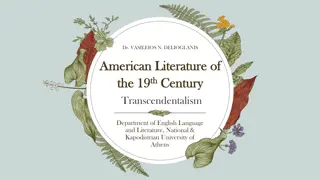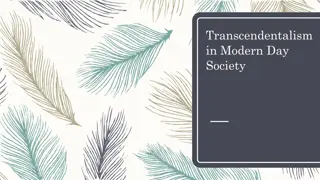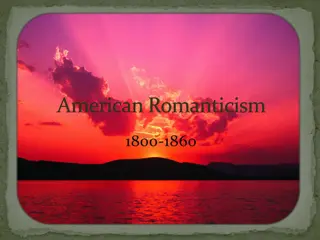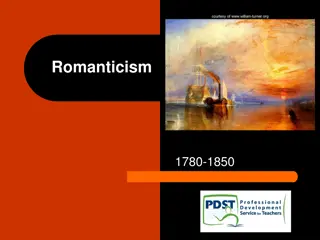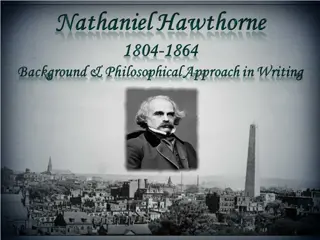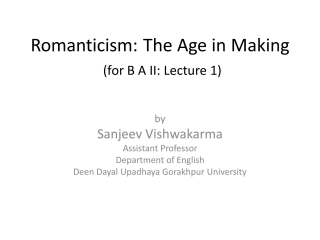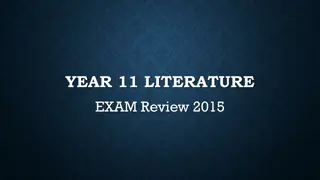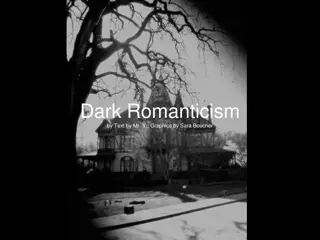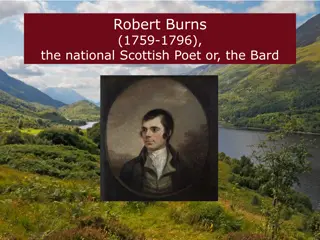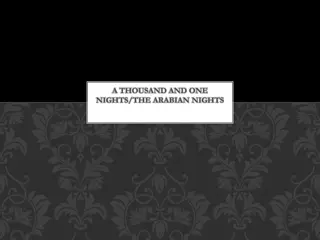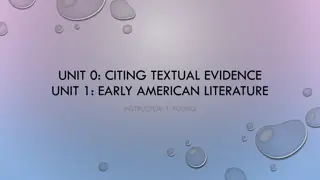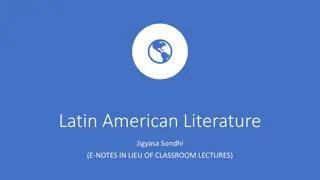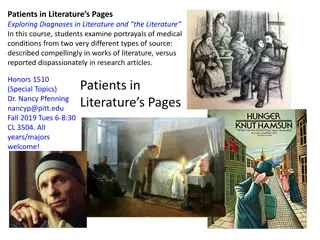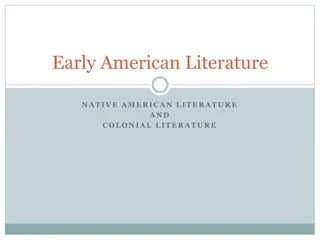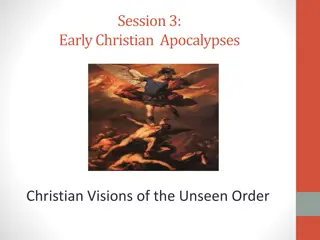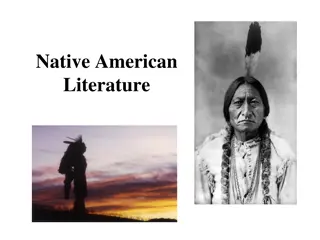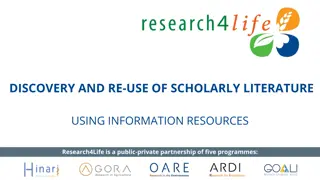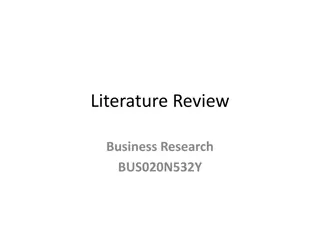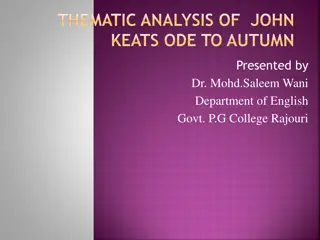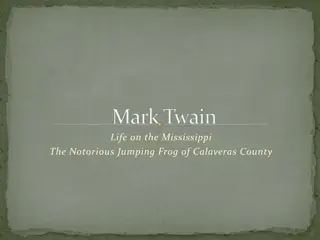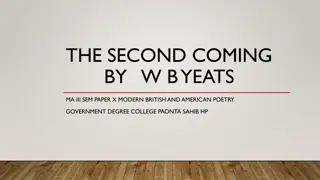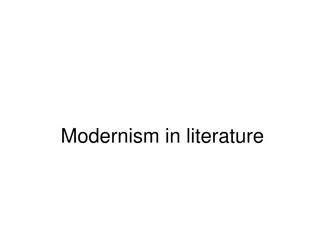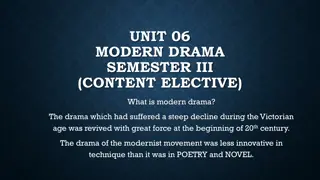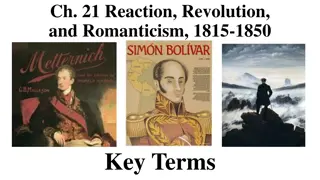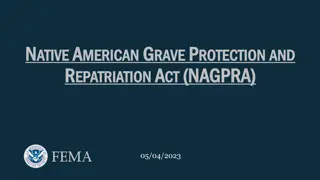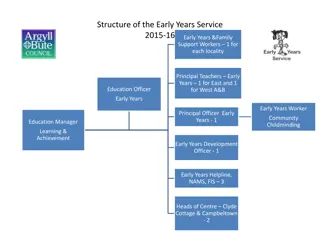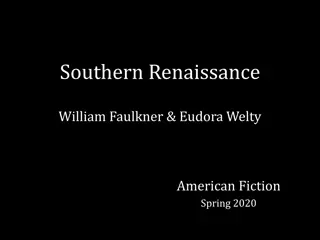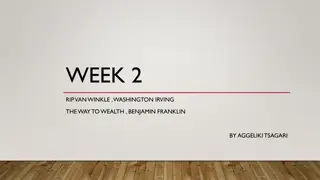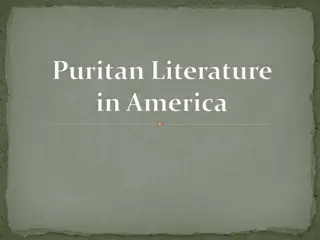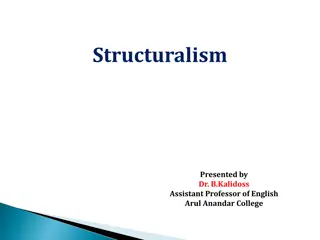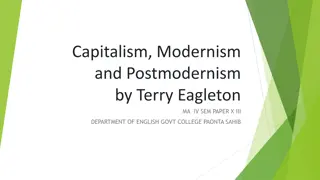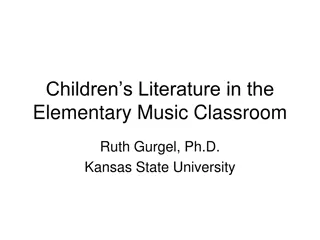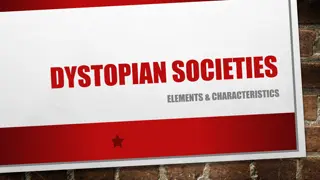Understanding Romanticism and Transcendentalism in Early American Literature
Exploring the defining characteristics of American Romanticism, such as a focus on nature, individualism, and self-reliance, alongside the beliefs and teachings of Transcendentalists like Thoreau and Emerson. Contrasting these literary movements as reactions to established norms and traditions, emphasizing personal truth and spiritual living over conformity.
Download Presentation

Please find below an Image/Link to download the presentation.
The content on the website is provided AS IS for your information and personal use only. It may not be sold, licensed, or shared on other websites without obtaining consent from the author. Download presentation by click this link. If you encounter any issues during the download, it is possible that the publisher has removed the file from their server.
E N D
Presentation Transcript
STUDY GUIDE FOR EARLY AMERICAN LITERATURE QUIZ ROMANTICISM, TRANSCENDENTALISM, GOTHIC, ETC.
ROMANTICISM: WHAT WERE SOME OF THE DEFINING CHARACTERISTICS OF THE ROMANTICS? These writers and artists take inspiration from nature and affirm the natural goodness of humans and democratic values. American Romantic writers also celebrate self-reliance and individualism, advancing the idea that everyone has a chance, or should. Writers in this genre tend to be politically progressive as well. EX: From Herman Melville's novel "Moby-Dick" to Thoreau's "Walden" and Walt Whitman's "Leaves of Grass," American Romantics are concerned with nature from several perspectives: Nature for itself and its beauty, for mental and spiritual refuge and for the revelation of the divine through the natural world. The American frontier and frontiers, such as Moby Dick's ocean, figure prominently in these literary works. T
ROMANTICS CONTINUED: Poets Walt Whitman and Emily Dickinson celebrate the ways in which everyday moments and situations, along with nature, can reveal the divine. These writers aren't afraid to clash openly with conventional ideas about religious dogma, the roles of women and slavery. In fact, some Romantic writers feelthat society is not the ultimate authority; its morality can actually be harmful. Literary symbols, including Walden pond (remember how he peaced out , the scarlet letter A (Hawthorne) and the Veil hold psychological truth. These writers ultimately celebrate common people, along with their own spirituality. Nature. Nature. Nature. Individualism and nature. More Nature. More Self Reliance. More Self-Reliance While in Nature .
TRANSCENDENTALISTS: Thoreau and Emerson 1. Believed in living closer to nature (Thoreau) 2. Believed in the dignity of manual labor (Thoreau) 3. Saw the need for intellectual companions and interests (Brook Farm, Margaret Fuller, The Dial) 4. Emphasized the need for spiritual living 5. Considered man's relationship to God a personal matter established directly by the individual himself
CONTINUED 6. Encouraged one great brotherhood (the Oversoul, the unity of all things) 7. Proposed self-trust and self-reliance 8. Believed in democracy and individualism 9. Encouraged reform (to awaken and regenerate the spirit) 10. Insisted on a complete break with tradition and custom (different than Romantics) 11. Know through intuition
SAMES Romanticism was partially a reaction against realism and objective reasoning. Similarly, transcendentalism was a reaction against overpowering religious traditions and dogma. Both encouraged the individual to discover their own truth and be ruled by that rather than obey the constructs of the time. Religion WAS THE BIG DIFFERENCE
Transcendentalists believed that God was present in every aspect of life, and could be experienced through the intuition. Every person had a divine inner light that could connect them to God. Their goal was to transcend" ordinary life to experience the symbolic and spiritual world around them. They rejected some religious dogma of the time in favor of a high spiritualized and personal understanding of God.
ROMANTICS AND RELIGION: Romanticism, on the other hand, was not as concerned with ideas of God. Their understanding was that religion was something that had to be worked out on a personal level, and one should not subscribe to preconceived religious structures. They believed that every person was capable of evil as well as good.
GOTHICS: WHERE ARE THEY IN THIS WHOLE THING? Gargoyles.
OK. MORE THAN JUST GARGOYLES OK. MORE THAN JUST GARGOYLES- - THEY ARE THE MASCOTS OF GOTHIC: MASCOTS OF GOTHIC: SUPERNATURAL ELEMENTS SUPERNATURAL ELEMENTS DARK DARK CASTLES CASTLES DECAYING ESTATES DECAYING ESTATES DARK DARK CATHEDRALS AND STAINED GLASS CATHEDRALS AND STAINED GLASS THEY ARE THE
HAWTHORNE: Very interested in Puritanical Religiosity Secret Sins of people often a theme Gothic Elements in his short stories Parables and Allegory
POE Another Gothic Writer Very influenced by early life- death of many women whom he loved Haunted by his own ideas First creator of the Mystery novel- precursor to Sherlock Holmes
LITERARY TERMS AND ELEMENTS: Allegory Parable (similar to Allegory, but with a more religious bend) Simile Metaphor Allusion Ambiguity (Hawthorne is deliberately ambiguous in his writing) Symbol Setting Anaphora Apostrophe
QUESTIONS TO PONDER: (I LIKE CHOICES-HINT/HINT) 1. To what degree did Edgar Allan Poe s life reflect in his works? 2. Explain at least one symbol in The Masque of Red Death. Is it part of a larger idea? If so, explain. 3. Explain the typical view that the Romantic writers and artists would have had about science and reason in early America. Be prepared to give an example! 4. Explain the allegory in Dr. Heidigger s experiment. 5. What Puritanical elements are reflected in The Minister s Black Veil? 6. Read the Poem (again) When I Heard the Learn d Astronomer and explain how it typifies the views of the Transcendentalist writers. 7. In Civil Disobedience, the author urged nonviolent protest against unjust laws. In what way did he influence future civil rights advocates? Be specific- I want names and examples.
WHO WROTE DAT? The Noiseless Patient Spider When I Heard the Learn d Astronomer Civil Disobedience Walden Moby Dick Scarlet Letter Dr. Heidigger s Experiment The Masque of the Red Death The Minister s Black Veil
WORKS SORT OF CITED: I STOLE MUCH OF THIS FROM THE INTERWEB.




